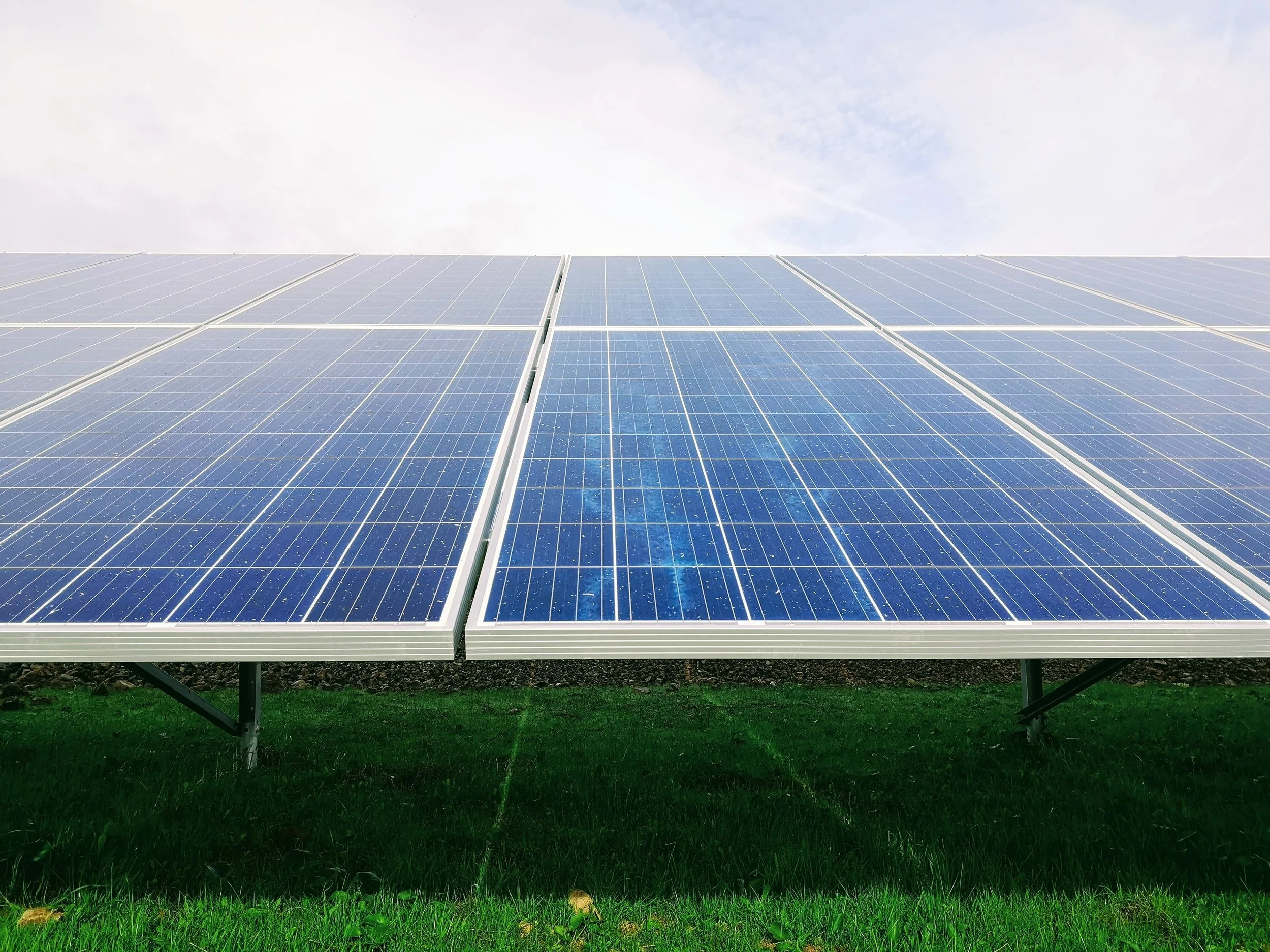Clean water is one of our communities’ most valuable resources—and one that depends on how we design and care for our shared spaces. From neighborhood parks to city streets, thoughtful stormwater management plays a vital role in protecting lakes, rivers, and groundwater. At paleBLUEdot, we help communities develop community sustainability and climate action plans that include a focus on implementing Best Management Practices (BMPs) to naturally filter and reduce polluted runoff while supporting healthy ecosystems and resilient neighborhoods.
A site’s solar feasibility is largely determined by return on investment, which depends on state net metering policies and utility interconnection tariffs. When full net metering isn’t available, or system sizes exceed tariff limits, ROI becomes harder to predict and requires estimating how much energy will be used on-site versus exported to the grid. To better understand this, the paleBLUEdot team researched typical on-site solar consumption by building type. This post shares our findings.
Climate action is not a trade-off against growth—it’s a catalyst for it. Cities with ambitious CAPs are not only leading in sustainability but also creating jobs, attracting investment, and building a resilient economy for decades to come.
Data centers are springing up everywhere and their massive energy and water demands can have detrimental environmental impacts on our communities. Luckily there are a number of things communities can do to not only protect their environment but also attract sustainability-minded data center developers to invest in their community.
Extreme heat is the leading weather-related cause of death in the U.S., prompting the Department of Homeland Security to issue new guidelines for extreme temperature response plans. Though not enforceable, these guidelines are incentivized through grant programs, as noted by DHS Secretary Alejandro Mayorkas. President Biden doubled the funding for FEMA's Building Resilient Infrastructure and Communities initiative to $2.3 billion, aimed at reducing vulnerability to extreme temperatures.
Calculate how much your household might get from the Inflation Reduction Act!
The 2022 Inflation Reduction Act introduces tax credits promoting cleaner energy adoption, addressing climate change and reducing energy costs. The Act supports buying used electric vehicles, energy-efficient home improvements, and clean energy units. It also safeguards households from energy price volatility, facilitates job creation in clean energy, and ensures benefits reach disadvantaged communities.
In our last post we revealed that a large majority of respondents to our Climate Adaption Surveys feel both well informed on the topic (80%) and are concerned (76%) about climate change. But why do they feel this way? What signs have they noticed?
An essential step in the Climate Action Plans we develop for communities is our Climate Adaption Survey. This survey consists of a series of over 20 questions, giving us a demographic profile of the respondents, insights regarding how they feel about climate change in general, and details about specific concerns as well. While we study the survey results for each community when we’re working on their CAP, until now we have never compiled the data into an overall analysis of what we’re finding out.
When thinking about reducing transportation sector emissions, most people think of high-profile solutions like electric vehicles, mass transit, or carpooling as the solutions to reducing carbon emissions from transportation. But there are other creative approaches some cities are taking.
Climate equity ensures the just distribution of the benefits of climate protection efforts and alleviates unequal burdens created by climate change. Climate action offers massive opportunities to reduce social inequalities, but they remain largely untapped.
With the impacts of climate change over the coming decades, what will summers feel like in your City? Climate Central created the interactive below to explore future summer time temperatures for 1,001 US Cities.. It shows how the average summer high in the future in each of these cities compares to other cities of today. In many cases, the climate shift places cities in entirely new temperature zones.
The City of Mountain Iron was awarded a 2017 Seed Grant from the Clean Energy Resource Teams (CERTs) for Renewable Mountain Iron. The project’s focus is on exploring city wide solar pv potential as well as the potential for on-site solar energy and achieving Net Zero Energy for 9 publicly owned buildings in the City of Mountain Iron. In addition, the study identified and studied the feasibility of utility scale community solar arrays at 6 sites throughout the City. The City engaged paleBLUEdot llc, a Minnesota Climate and Renewable Energy consultancy to complete this project.
The City of Albert Lea was awarded a 2017 Seed Grant from the Clean Energy Resource Teams (CERTs) for Solar Ready Albert Lea. The project’s focus is on exploring city wide solar pv potential as well as the potential for on-site solar energy and achieving Net Zero Energy for 15 buildings owned by the City of Albert Lea, Albert Lea Area Schools, as well as Freeborn County. The City engaged paleBLUEdot llc, a Minnesota Climate and Renewable Energy consultancy to complete this project.
The City of Faribault was awarded a 2017 Seed Grant from the Clean Energy Resource Teams (CERTs) for Solar for City and Schools. The project’s focus is on exploring the potential for on-site solar energy and achieving Net Zero Energy for 18 buildings owned by the City of Faribault, Faribault Public Schools, as well as Shattuck-St. Mary’s. The City engaged paleBLUEdot llc, a Minnesota Climate and Renewable Energy consultancy to complete this project which has has been on-going throughout the year and is nearing completion.
For businesses, installing solar panels on your roof, over your parking lot, or on an under-utilized section of your site can provide your business with a number of benefits.
Maplewood was awarded a 2017 Seed Grant from the Clean Energy Resource Teams (CERTs) for Re-Energize Maplewood! The project’s focus is on both energy efficiency actions as well as renewable energy. It has built on the success of the Energize Maplewood! energy actions and also represents the first step towards the City’s 2040 Comprehensive Plan renewable energy goals.
The Tribe worked with paleBLUEdot to conduct the research and establish a long-range solar pv implementation plan for Tribal facilities, identifying the potential for 24 tribal jobs and the elimination of over 38,000 metric tons of greenhouse gas.
paleBLUEdot conducted a study is to support the City of Maplewood in understanding the nature and proportion of land coverage throughout the City and in establishing appropriate goals and strategies to improve the environmental impacts and opportunities related to land coverage.






























Electric vehicles (EVs) are transforming transportation by lowering emissions, cutting fuel costs, and helping communities transition away from fossil fuels. For cities pursuing sustainability, energy resilience, or climate goals, investing in public EV charging is essential—not redundant. While many drivers can charge at home, a robust public charging network ensures equitable access for those who cannot, supports plug-in hybrid users, strengthens the local economy, and accelerates broader EV adoption.